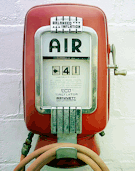Tire pressure So its that time again. Time when the weather cools and your tire pressure drops, as directed by nature, and you’ll soon see the Tire Pressure Monitor System (TPMS) light. The one that looks too much like a horseshoe. And mine did as well. So off I went to the gas station to …
Tag: TPMS
Permanent link to this article: https://dashboardsymbols.com/2025/10/tire-pressure-season-approaches/
Permanent link to this article: https://dashboardsymbols.com/2024/11/a-word-on-tire-pressure-and-tire-pressure-guages/
Are You Seeing a Horseshoe-shaped Dashboard Warning Light?
What is the Horseshoe-shaped Dashboard Warning Light? At this writing, its cold weather time again and time again to speak about the Tire Pressure Monitoring System (TPMS), and its associated warning light(s). Every year several million more drivers who have recently upgraded their cars will encounter the light for the first time. These are two …
Permanent link to this article: https://dashboardsymbols.com/2023/12/are-you-seeing-a-horseshoe-shaped-warning-light/
Know These 21 Most Common Auto Warning Lights
Common Auto Warning Lights Every day, thousands of drivers are faced with a warning light that they may not recognize. Knowing what to do is important and not knowing can cost you money. What follows are short explanations for twenty one of the most searched auto warning lights or symbols. If you see one of …
Permanent link to this article: https://dashboardsymbols.com/2019/05/twenty-one-most-searched-auto-warning-lights/
Warning Light Image Fails
A New Image Please! We are going to have a little fun here, pretty much at my expense. We have long railed about the images chosen for warning lights. They are intended to be easily interpreted by the average driver, but nearly across the board are a total fail. Follow along to see why! For …
Permanent link to this article: https://dashboardsymbols.com/2018/08/warning-light-image-fails/
The Single Most Misunderstood Warning Indicator on Your Instrument Panel – Part II
Misunderstood Warning Indicator: Part II This suggests four possible scenarios. The first three assume the light is not flashing: 1) All the tires are low on air (check your spare in the trunk too, if you have one). This occurs seasonally as the weather cools, and possibly several times. Solution? Check the pressures and inflate …
Permanent link to this article: https://dashboardsymbols.com/2015/01/the-single-most-misunderstood-warning-indicator-on-your-instrument-panel-part-ii/
Seven Things to Know About Tire Pressure Monitoring Systems
Know Your TPMS Its Fall (2014) and time once again for your car’s equivalent of Seasonal Affective Disorder, your Tire Pressure Monitoring System or TPMS. If equipped, one of the two TPMS warning indicators shown will soon attempt to get your attention (Drivers most commonly describe the lights as horseshoes with exclamation points or arrows in …
Permanent link to this article: https://dashboardsymbols.com/2014/09/seven-things-to-know-about-tire-pressure-monitoring-systems/
- 1
- 2




Tire pressure season approaches
Tire pressure season To the right is a large version of the Tire Pressure Monitoring System (TPMS) or Tire Pressure Monitor (TPM) warning light. The tell-tale comes on during tire pressure season, when the air outside begins to cool and shrink. More precisely, the symbol will be seen when the inflation on at least one …
Continue reading